Stay in the know on all smart updates of your favorite topics.
True Price Lab is launched

The True Price Lab is a project focusing on willingness to pay the true price for food and drink.
From 26 February to mid-June 2024, the restaurant and espresso bar in the Corry Tendeloo Building of the Amsterdam University of Applied Sciences will be dedicated to the True Price Lab. For four months, students and staff will be able to choose between paying the normal or true price for a number of products. This project is an initial exploration of consumers' willingness to pay the true price, which includes hidden environmental and social-impact costs.
True price versus consumer price
The true price can be defined as the price applicable after calculating and improving the true price of a product. The true price is based on the retail price plus the sum total of external social and environmental costs. Traditional pricing disregards these external costs, which are effectively paid for by society. For example, the retail price of a cup of coffee does not include the environmental damage of pest control or the underpayment of the farmers who grow the coffee.
The full extra amount that participants pay when they voluntarily opt for the true price will go to the non-profit organisation Solidaridad. Solidaridad wants to make the world a place where everything is made and bought in solidarity with people, the environment and future generations. Visitors to the restaurant and espresso bar can learn more about what their contributions will be used for by scanning a QR code.
SESA project – Smart Energy Solutions for Africa to accelerate the green transition and energy access

Context
Africa is the fasted growing continent on the planet, measured both in GDP as in population, which historically is accompanied with a growth in energy consumption. With an eye on the Paris Agreement and COP26 it is clear the energy should be Low or even Zero Emission. However, it is important this does not stifle the economic growth allowing millions to climb out of poverty. With this in mind the EU funded the SESA project that aims at mitigating climate change while improving access to sustainable energy under affordable, reliable conditions.
Project brief
SESA is a four-year (2021-2025) EU H2020 funded R&D project designed to combine innovative energy access solutions for a range of applications in both urbanised and rural contexts in Africa. These solutions will include decentralised renewables (solar photovoltaics), innovative energy storage systems (including second life batteries), waste-to-energy systems (biomass to biogas), smart microgrids, (micro) mobility solutions, climate-proofing, resilience and adaptation, and rural internet access.
SESA focusses on testing, validating and replicating those energy innovations through co-developed demonstration actions in 9 sites across the continent (1 Living Lab for testing, 4 for validation and 4 for replication).
The collaborative project is the result of a strong partnership between leading European and African universities, research centres, industry actors, local governments, knowledge and implementation organizations and networks.
Objectives
The main goal of SESA is to support a diversity of affordable solutions that help provide access to reliable, affordable, and sustainable energy services for all, creating new business opportunities and developing concepts that can directly contribute to a low-carbon development. It further provides policy makers with recommendations aiming at creating a favourable regulatory environment to ensure long-term impacts of the solutions developed. In addition, a key deliverable for the project is the SESA Toolbox, which will contain materials relating to the following main building blocks:
- Impact assessment
- Capacity building
- Business plans and models
- Innovations tested in demonstration actions
- Design, operations and management for different solutions
- Financing & funding options
- Policy support
Cenex NL’s key contributions
Cenex NL leads the work package responsible for the development of the key repository of the project, the so called “SESA Toolbox”, and the evaluation of the project results available in the toolbox. Our team will be involved in three tasks:
- Build a scalable and harmonised toolbox for advanced implementation, management and operation strategies of efficient sustainable energy solutions.
- Develop an evaluation framework based on the Life Cycle Assessment (LCA) methodology to quantify and compare the environmental impacts of the proposed solutions.
- Assess the impact of the solutions developed in at least five the demonstration and validation projects using the framework developed in the previous task.
This project has received funding from the European Union’s Horizon 2020 research and innovation progamme under grant agreement No 101037141
The Supportclub

Our idea: The Supportclub, let’s look after someone, as a team
The Supportclub makes volunteering for another person fun and easy to do. Our app carefully designs teams around a person in need, based on skills and fields of interests. Our network partners invites people that need a little help or company, informal care to make a profile as a supportee. Our campaign recruits people that want to help somebody, the supporters. They also make a profile.
The Supportclub app matches supporters based on their interests and skills. The app creates (temporary) teams around a supportee, e.g. Annie → Support team Annie. The Supportclub facilitates the teams to work together for Annie providing handy features like notification, a calendar, chat and monthly meet-up for the team.
The Supportclub proposition for supporters:
- look after a person that needs some help (18+)
- in a carefully designed team
- for a fixed period of time
- with social team activities
- facilitated by an app
Join the Supportclub!
The Support club proposition for supportees:
- Do you need some help or company?
- Register yourself at The Support Club and get a team. Three to five people that are willing to look after you. They do it together and make new friends while doing it.
- You let us know what your needs are and we do the rest.
Join the Supportclub!
Open Call: Create impact with the European CommuniCity project!

Does your organisation work with vulnerable target groups in Amsterdam, or are you a tech company with great ideas for digital solutions for this group? Create tech applications together for the challenges of vulnerable communities during the European CommuniCity project.
From 28 February to 31 March, you can submit your proposal for one of the challenges to CommuniCity for a chance to win a €12,500 grant to test your idea in practice.
How does it work?
- Companies or organisations submit their proposal via the CommuniCity website;
- The submissions are assessed against the set criteria and thus the winners are selected;
- The winning entries receive a grant of 12,500 euros to develop and test their solution together with the target group in Amsterdam.
For more information about the project, the challenges for Amsterdam and application conditions check the website below!
Intelligent Transportation System – Best Option for Smart Cities

Growing population, aging infrastructure, lack of mobility-related resources, and inefficient transport networks are leading to higher traffic congestion, road safety, and supply of mobility services in urban areas. It has become important for cities to look for smart mobility solutions to tackle these problems. Intelligent Transportation System is one such innovative concept that enables reliable and more personalized travel experience to move around in cities. Let’s have a look at the concept in detail.
What is an Intelligent Transportation System?
Intelligent Transportation System (ITS) strives to innovate, plan, operate, evaluate, and manage transportation systems by leveraging advanced information and communication technologies. ITS refers to the use of technology to collect and analyze information related to the sector to deliver integrated transportation solutions.
It focuses on various modes of transportation, infrastructure, vehicles, traffic management, stakeholders, and smart mobility. From a holistic point of view, it rectifies errors related to transportation, infrastructure and enables systematic management of the entire transport system by leveraging a wide range of technology. It is one of the important components of many innovative transportation solutions like Mobility as a Service, Connected, and automated mobility.
Moreover, effective use of infrastructure, capacity, technology in ITS requires a lot of planning well in advance by ITS specialists. That can be implemented by collaboration or public-private partnerships. Because there are so many things that need to be taken into consideration while implementing ITS, e.g., transport modes, design, routing, vehicles, technology type, and traffic flows, to make transportation safe and well-coordinated.
What is the need For ITS?
Transport authorities continue to raise the bar for safe and hassle-free transportation for commuters, but there are other challenges that commuters face related to urban congestion, inadequate road infrastructure, aging infrastructure, road safety, inefficient public transportation, and higher energy consumption. ITS can play an important role in solving these problems and better manage and control the transportation systems in real-time.
ITS facilitates new opportunities and more transportation choices integrated with easy-to-use technology. It is a multi-disciplinary concept that presents much-needed and cost-effective transportation solutions for smart cities. ITS can:
- Use resources and infrastructure effectively (existing as well as new)
- Plan, design, and implement comprehensive transportation systems
- Offers multi-modal, adequate, and on-demand transportation options
- Enhance public transportation management and its attractiveness
- Combat urban congestion
- Improve road safety and security
- Reduce fuel and energy consumption levels
- Control and manage traffic in the cities
- Make transport safe, efficient, manageable, and sustainable
Observatory of ideas

Solidary, Creative Economy, for Communities and With Communities!
Thousands of other initiatives around the world!
(Ana Luíza Farage Silva)
At some point people realized that they needed each other to do something other than "subsist". From there, they decided to organize themselves in something called communities in order to improve their lives and practice a good "survival". Over time, they realized that the law of the strongest could hurt and decided to affirm social contracts to live together and in harmony.
Some people understood that they should give up some freedoms for this, others did not. Over time, these communities have been forming their stories, generating their identities and dynamizing their cultures. When communities became organized, they started to be called societies.
How many societies do we know? How many societies do we live in? Within these social contracts, many have little and few have a lot. Much what? Wealth? Yes, few have access! Access to quality education, decent health, respectful housing, nutritious food and so on.
How many can do what they want and how many cannot do what they need? It is in this concern that I perceive (as several others have already noted) that everything tends to come together. The better structured places attract bigger investments that generate bigger chains that attract even more investments and keep developing (or just growing) more and more. The point is that where there is little, little remains.
Does it have to be this way? If you were a government official and were going to choose to develop a state, would you give growth incentives to regions that are already more advanced or encourage the development of those that still have almost nothing? The prudent answer may be: "it depends" ... if you just want to develop faster, it may be easier to encourage the growth of the wealthiest regions.
After all, their chain is greater and they can “pull” other cities in the process of growth. But if you think about it on the other hand, you can see that there is no certainty that the poorest cities will be fostered by the richest. Will the access ever get there? With this in mind, several concepts and practices have been developed. Have you ever heard of Creative Economy? Basically, knowledge, creativity and intellectual capital are the production factors of this economy.
In this process, cultural production is used as a historical factor in the formation of identity and income generation in that community. In other words, a new look at the solution of the structural problems of society, the economy and culture are sought from the identity of that population.
In other words, development is sought from the convergence and respect for the roots of that people's history with cultural, social and economic objectives. Discussions, initiatives and studies have been taking place throughout Brazil with the aim of expanding this concept: the first International Forum of Creative Cities in Rio Quente took place in September 2013 http://rioquente.go.gov.br/cidades-criativas/, the IV Minas Gerais Meeting of Public Administration, Solidarity Economy and Social Management (IV EMAPEGS) addressed this theme in Viçosa this year http://www.emapegs.ufv.br/ and so on.
In addition, another concept has been addressed, created and practiced. Have you heard of Solidarity Economy? The concept of solidarity started to be guided at the end of the 18th century, but it has not yet been completely assimilated to the market. In this context, solidarity economy means interdependence and is based on the principles of cooperation, self-management and brings an economic dimension to society. In other words, we think of a market geared towards people, not people geared towards the market.
Despite the various difficulties faced by the Solidarity Economy, such as mapping, production flow, obtaining credit, advice and collective work, many advances and initiatives have taken place in Brazil. Have you heard of the Center for Solidarity Economy of Tocantis? UFT's NESOL? They have been working hard on this process: http://www.fapto.uft.edu.br/conhecimento/index.php/uft/14-nucleo-de-economia-solidaria-da-uft-nesol. Many communities have also realized that they live on the job, but remain in poverty. So they decided to challenge all the pre-established and create social currencies. That is, they realized that they had to develop some way to encourage the money to circulate more within the community itself, with the possibility of exchanging it for the real. Some initiatives have been implemented in Brazil. The first was Banco Palmas, at the Palmeiras complex in Fortaleza (CE). http://www.bancopalmas.org.br/oktiva.net/1235/nota/12291. Today there are more than 110 community banks, a chain, across Brazil. Several other initiatives in the world have been taken, but it is clear that challenges abound.
52 weken duurzaam, we gaan het gewoon doen.
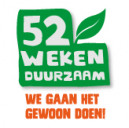
52wekenduurzaam nodigt je uit om je eigen leven stap voor stap duurzamer te maken. Een jaar lang iedere week een kleine verrassende en duurzame stap. Om te zien of het bij je past. Word je er gelukkig van, dan hou je het vol. Zo niet, dan skip je het. Wij onderzoeken wat er wel kan. Uitdagend, leuk, leerzaam en gratis. Loop je een stukje met ons mee?
Wij denken dat we met elkaar op een gemakkelijke manier veel duurzamer kunnen worden. Door elkaar te inspireren en uit te dagen. Door leuke en verrassende dingen te onderzoeken. Om zo je eigen versie van een duurzame leefstijl te ontwikkelen. We streven naar 5000 deelnemers in 2021. Hoe meer mensen meedoen, hoe beter. Voor onze Totale Impact Score, maar ook voor jezelf, want samen is veel leuker dan alleen. Dus geweldig als je nu al je gezin, je buren, vrienden en collega’s inspireert om ook mee te doen.
Wicked Problems
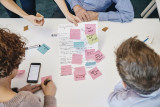
Te wicked? Niet voor ons.
Wij werken allemaal aan urgente, complexe, maatschappelijke uitdagingen. Issues die schier onoplosbaar lijken, van dilemma’s en paradoxen omgeven, nog niet duidelijk hoe het moet. Wel is duidelijk dát het moet, dat we elkaar nodig
hebben en dat we er NU aan moeten beginnen. Om met de woorden van Jan Rotmans te spreken; we leven niet in een tijdperk van verandering maar in een verandering van tijdperk. En hier hoort een nieuwe gereedschapskist bij.
En of je nou aan energietransitie werkt, andere mobiliteitssystemen, creëren van waterstofhubs, peer to peer autodeelsystemen, het maakt niet uit, we zien dat al deze opgaven op enig moment tegen gelijksoortige barrières aanlopen. Op samenwerking, financiering, privacy, onvoldoende aansluiting op de maatschappij, om maar een paar voorbeelden te noemen.
Unieke samenwerking
Als Amsterdam Smart City netwerk willen en kunnen we deze opgaven niet laten liggen. Door het bundelen van onze kennis en expertise kunnen we als netwerk iets unieks bieden en de wil en durf tonen om deze barrières te doorbreken. De betrokken partners die dit uitdenken en begeleiden zijn RHDHV, Kennisland, Drift, NEMO, Arcadis, Alliander, HvA en Metabolic. Zij bundelen hun expertise en ervaring om de echte vragen boven tafel te krijgen, tot nieuwe manieren van samenwerken te komen en barrières te doorbreken. We richten ons met name op de start van de samenwerking. Gezamenlijk ontwikkelen we een ‘wicked problem aanpak’. Op een nieuwe manier, lerend door te doen, exploratief.
Waar moet je aan denken?
Wat is eigenlijk het echte probleem? Wiens probleem is dit? Hoe kijken anderen er tegenaan? Welke andere partijen lijken nodig? Hoe vind je ze? Hoe ga je om met eigenaarschap en botsende frames? Hoe zorg je dat je al in
een vroeg stadium de maatschappij (bewoners, ondernemers, werknemers, etc) betrekt en hun ervaringen in het project trekt? Het wicked problem team zet nieuwe methoden in voor het beantwoorden van deze vragen. En het creëren van de benodigde commitment om het vraagstuk aan te pakken. Niets staat van te voren vast, want we passen ons aan aan wat we tegenkomen. Met elkaar ontwikkelen we een nieuwe aanpak om de barrières te doorbreken.
Isolde de Ridder Sieraden
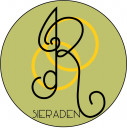
At Isolde de Ridder Sieraden, founded by Isolde de Ridder – Le Creurer in 2017, creating high-end jewellery with the greatest of care for both people and planet, is our mission. We strive to make the world more beautiful with our unique jewellery. Our unique pieces are crafted by hand in the Netherlands. Jewellery that give discarded metals and other materials a second life and that contribute to a better world for generations to come.
Upcyclecentrum Almere

In the Upcyclecentrum we make the circular economy and the upcycle process visible and tangible. We don’t do this alone. Our residents provide us with raw materials by properly separating their waste, the entrepreneurs (startups) upcycle these raw materials into new products and inspiring workshops are organized in our circular designed experience center. Waste = raw material in the circular economy; this is the central theme of all our activities.
Follow us on instagram on www.instagram.com/upcyclecentrum
#upcyclecentrum
Oceanic Face shields
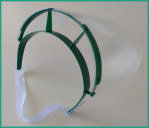
Personal protection products made with high plastic recycling content (all green parts) Other parts still work in progress
OCEAN (and EAR) SAVERS

Product made with 100% recycled plastics from the maritime industry (obsolete fishing gear and ropes)
Hollandse Luchten

Via diverse pilots, burgermetingen en evenementen brengen we de leefomgeving van Noord-Holland in kaart en zetten we deze gezamenlijk om in actie. Door data samen te verzamelen, zullen we ook samen op zoek gaan naar oplossingen. Deze aanpak noemen we citizen sensing. Hollandse Luchten maakt gebruik van experimentele technologie en onderzoekt de waarde van nieuwe sensortechnologie voor inwoners van Noord-Holland.
Via diverse pilots, burgermetingen en evenementen brengen we de leefomgeving van Noord-Holland in kaart en zetten we deze gezamenlijk om in actie. Door data samen te verzamelen, zullen we ook samen op zoek gaan naar oplossingen. Deze aanpak noemen we citizen sensing. Hollandse Luchten maakt gebruik van experimentele technologie en onderzoekt de waarde van nieuwe sensortechnologie voor inwoners van Noord-Holland.
Pilots
De belangrijke doelstelling van de pilot opzet van Hollandse Luchten is het betrekken van burgers rondom data verzameling om zo op basis van nieuwe inzichten een leefbare en duurzame samenleving mogelijk te maken. Door open innovatiemethoden in te zetten in combinatie met het gebruik van betaalbare open hardware en nieuwe digitale mogelijkheden, worden burgers betrokken en ontwikkelen ze handelingsperspectief in het aanpakken van belangrijke maatschappelijke uitdagingen. Hollandse Luchten maakt hierbij gebruik van experimentele technologie en onderzoekt de waarde van nieuwe sensortechnologie voor inwoners van Noord-Holland.
Partners
In dit project onderzoeken we in opdracht van Provincie Noord-Holland hoe door middel van open source en betaalbare meetsensoren, burgers meer inzicht kunnen krijgen op de luchtkwaliteit in gebieden waar de leefkwaliteit onder druk staat. Hier werken meerdere partners aan mee o.a.: RIVM, Omgevingsdienst IJmond, Omgevingsdienst Noordzeekanaal, TATA Steel, Smart City Haarlem, Gemeente Zaanstad, Gemeente Haarlem, Buiksloterham Circulair, Brak! IJmuiden en Waag.
Citizen Sensing
Citizen sensing is een nieuwe manier om de leefomgeving in kaart te brengen. Een belangrijk onderdeel van deze leefomgeving is de luchtkwaliteit. Traditioneel gezien wordt luchtkwaliteit gemeten door officiële meetstations van partijen zoals het Rijksinstituut voor Volksgezondheid en Milieu (RIVM) en de GGD. Deze meetstations geven nauwkeurige maar plaatsgebonden data. Luchtkwaliteit kan echter sterk verschillen per locatie en tijdstip. Omdat er relatief weinig meetstations zijn wordt de luchtkwaliteit op veel locaties of geschat via berekeningen en voorspellingen of niet gemeten waar dat wel belangrijk is. Hoe is de luchtkwaliteit van een basisschool of voetbalclub naast een drukke verkeersweg, bijvoorbeeld, of voor mensen die in de buurt van een fabriek wonen?
Citizen sensing probeert dit gat op te vullen met burgermetingen van luchtkwaliteit. Met goedkope en toegankelijke open-source sensoren kan de luchtkwaliteit door heel het land in kaart gebracht worden. Op deze manier kan citizen sensing lokale problematiek aankaarten en biedt het data om verandering teweeg te brengen. Met data kan bijvoorbeeld een nieuw gesprek op gang gebracht worden dat gebaseerd is op een beter inzicht van de situatie. Ook kunnen oplossingen beter worden afgestemd op de werkelijke lokale situatie. Het RIVM onderzoekt dit van hun platform Samen Meten aan Luchtkwaliteit. In de volgende video leggen ze uit waarom dit belangrijk is.
Waag en Citizen Sensing
Voor Waag is Hollandse Luchten een belangrijk project binnen haar onderzoek naar burgergedreven dataverzameling over de kwaliteit van leefomgeving. Waag deed hier eerder in Europees verband onderzoek naar onder de noemer Making Sense. In samenwerking met o.a. Barcelona, Pristina (Kosovo) en Amsterdam werd in negen pilots gekeken naar dit soort onderzoek. Over dit project verscheen de documentaire: Citizen Science Revolution.
Outdoor Office Day

In het Nieuwe Werken staan gezondheid en vitaliteit centraal. Voor iedereen is bewegen en werken in het stedelijke groen een ‘must’. Wist je dat wetenschappelijke onderzoeken hebben aangetoond dat een groene omgeving bij mensen creativiteit stimuleert, de concentratie verbetert en een rustgevend effect heeft? Buiten bewegen is noodzakelijk voor je gezondheid. Het sluit perfect aan bij de breed gevoelde noodzaak om het werkgeluk en het welzijn van medewerkers te verbeteren.
Staat het idee van een #OutdoorOfficeDay je wel aan?
Verlang je ook naar een werkoverleg buiten in het stedelijk groen, in de omgeving van je kantoor? Wil je bij voorkeur je plannen wandelend bespreken met een collega? Of gewoon ergens in een park in de buurt een werklunch organiseren? Of het liefst dat belangrijke telefoongesprek buiten voeren?
Initiatiefnemer Nature Desks wil ook andere mensen, organisaties en bedrijven in Nederland uitnodigen om ook dit jaar op 23 juni hun ‘werkplek’ letterlijk buiten in het stedelijk groen te plaatsen.
Ook jij kunt aan de slag met deze landelijke Outdoor Office Day! Ga naar buiten. Maak je collega’s enthousiast en verzin een gaaf idee voor de #outdoorofficeday!
Urban Nature Amsterdam

#UrbanNatureAmsterdam, de eerste papieren groene en blauwe kaart van de stad.
Amsterdam is veel meer dan een verzameling straten, gebouwen, cultuur en economische activiteit. Het doel van deze stadskaart is om te laten zien dat we leven temidden van parken, (binnen)tuinen, plantsoenen, natuurspeeltuinen, groene daken, meren, grachten, rivieren, polders en bossen. Een uniek groen en blauw stadslandschap dat we ongemerkt delen met meer dan 10.000 soorten flora en fauna.
De KasKantine
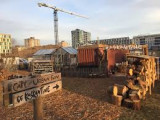
The KasKantine is a small, transportable, ecovillage in the city, currently buildin up on its fourth location in the West of Amsterdam, completely made with DoItYourSelf technology and mostly with natural and waste materials. Still it has hold a liquor permit and a restaurant that can host up to 150 guests. Furthermore a mobile aquaponic system, rain water filter and waste water filter, 30 solar panels and 13 shipping containers accommodating social initiatives and ecological entrepreneurs.
Campus Amsterdam

Amsterdam is where the world discovers new solutions for global challenges. Campus Amsterdam connects all campuses, labs and innovation districts in the Amsterdam metropolitan area, to provide entrepreneurs, researchers and students around the world with one entrance to the region's wealth of innovation, knowledge and education.
For all the local partners involved, Campus Amsterdam is a network that facilitates the exchange of knowledge and the development of new crossovers. The diversity and amount of districts combined with Amsterdam's bottom-up innovation DNA make Campus Amsterdam a unique accelerator of regional innovation.
Nature4Cities

Nature4Cities is a H2020 EU-funded project, creating a comprehensive reference Platform for Nature Based Solutions (NBS), offering technical solutions, methods and tools to empower urban planning decision making. This will help addressing the contemporary environmental, social and economic challenges that face European Cities.
We will bring Nature back into innovation, planning and their implementation. This new governance implies new collaborative models driven by citizens, researchers, policy makers, and industry leaders, utilizing co-creation processes and sharing of Best Practice. Thus, the goal for implementation Projects is a positive balance between economic, environmental and societal benefits and costs.
Prevent noise nuisance from a youth hangout
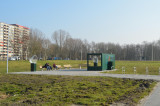
Noise pollution is one of the biggest social problems in densely populated areas. To monitor and solve noise pollution problems in cities SensorTeam developed a novel automated platform and sound sensor for distributed noise measurements.
In a partnership with the city of Amstelveen we have installed a professional audio system in a hangout at the Zetterij in Amstelveen. We use wireless sensors to measure the sound level (dB) produced around this meeting place to avoid public nuisance.
These sensors are placed in the area around the hangout. Maximum sound levels can be remotely monitored and adjusted from SensorTeam’s cloud platform.
In this smart city project the city of Amstelveen gives substance to the local youth’s wish to play music at their own hangout.
About the technique
SensorTeam’s sound level meter is solar powered and is using low power network (LoRa) communication for realtime cloud monitoring. Measurements are accurate and independent and are displayed on SensorTeam’s cloud dashboard. To visualise the recorded data (sound levels) the varying decibels are represented on a coloured map, using inverse distance weighted technique.
LoRa Sound Sensor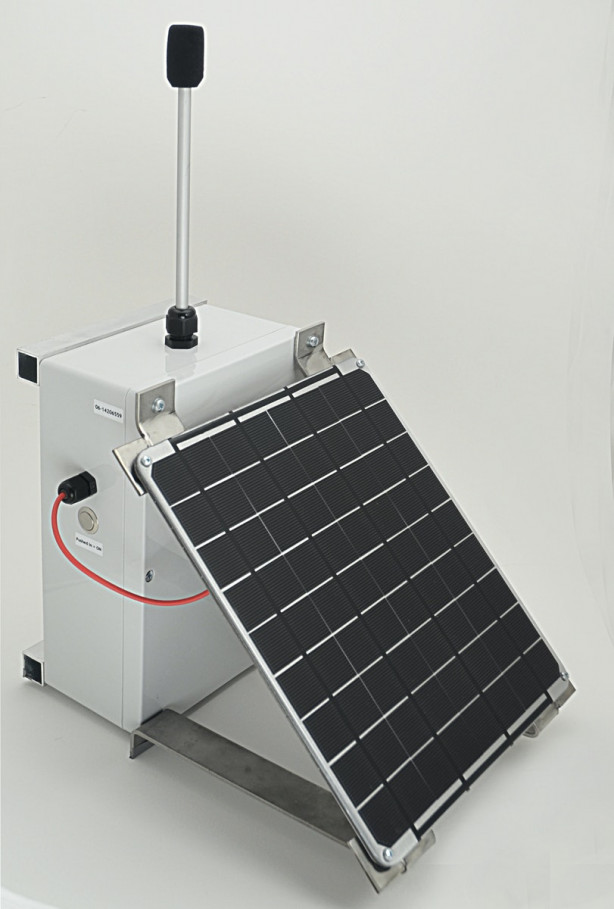
SensorTeam IoT Dashboard
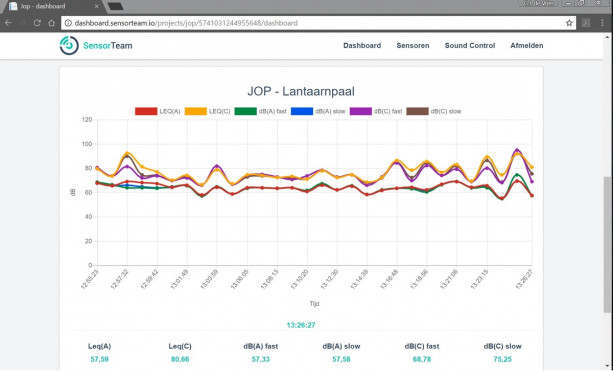
Circle Lab

Circle Lab is an online platform for cities, businesses, and citizens to explore, brainstorm, and implement circular business models and strategies to tackle universal and local challenges. By digitising knowledge, opening up access, and encouraging co-creation, we aim to break down information silos and fuel cross-industry collaboration and innovation. The circular economy has the potential to change the world, and we believe the time to bring the concept to the kitchen table – so that everyone, from entrepreneurs to big brands, can play a role in making it a reality – is now.
- If you are interested in participating in one of our challenges register on the platform at www.circle-lab.com
- If you would like to provide content for our knowledge hub or are interested in placing a challenge on the platform please email us at hello@circle-lab.com
Stay up to date
Get notified about new updates, opportunities or events that match your interests.

